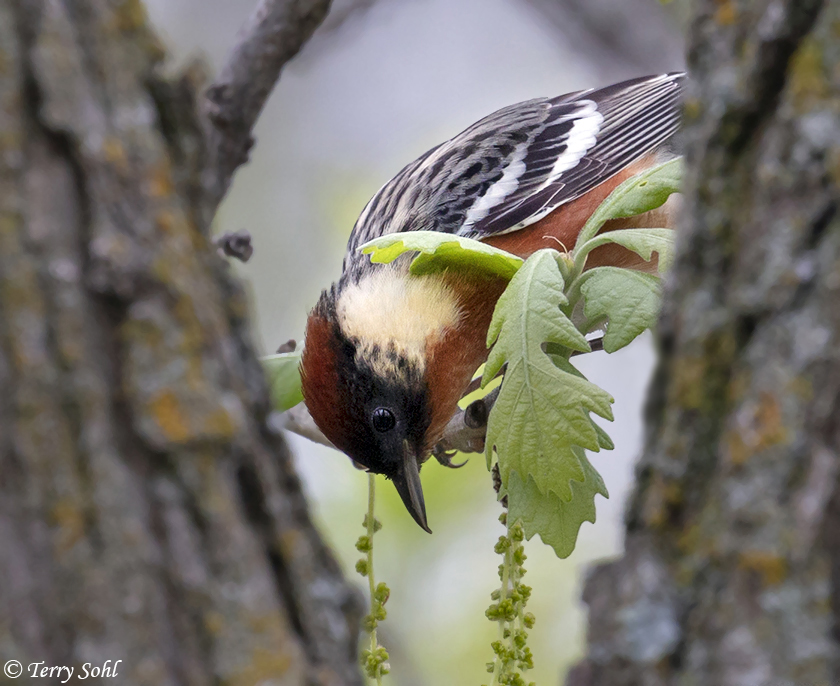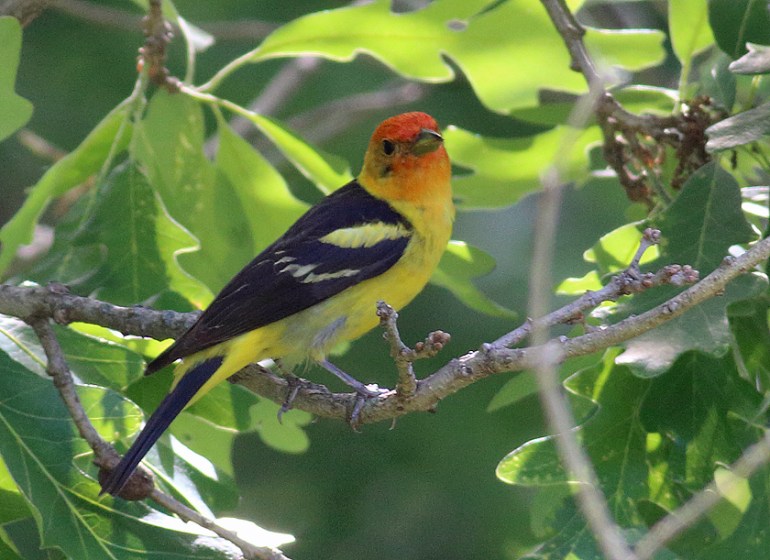Our family had a wonderful vacation in Kauai, spending 9 days on the island. On the evening of June 28th, we headed to the airport in Lihue for the long trip home, with flights from Lihue to Denver, and Denver to Sioux Falls. If everything went well, we were due to be home at 1:30 pm on June 29th. We ended up arriving in Sioux Falls an hour late, safe and sound, but it was anything but a routine experience. Instead, it ended up being one of the scariest experiences our family has had. Given I have yet to see a filed FAA incident report or other information about that last flight (Denver to Sioux Falls, UA Flight 5918), I wanted to record what happened here…partially in case others on the flight were also wondering what the hell happened.
Our first flight was United flight 1685 from Lihue to Denver. We were supposed to depart around 7:10pm (June 28th), arrive in Denver early the morning of June 29th, and have plenty of time to catch our plane to Sioux Falls. From the start, things in Lihue were chaotic. We saw a flight from Lihue to Los Angeles was delayed until the next day, and while we waited for our flight, a flight from Lihue to Seattle was simply cancelled, leaving many angry customers milling around trying to find a way home. As we sat at the gate awaiting our flight to leave, there were no staff at the gate when we first got a text message from United, noting our flight to Denver was delayed. The reason…”Our maintenance team is servicing a fluid leak on our plane before we can depart for Denver”. Little did we know that “fluid leaks” would be the theme of our trip home, with this one being the least of our worries.

We had to wait 2 hours for a replacement part for our Lihue to Denver flight to arrive from Honolulu. Not once during that time did we get an update from an on-the-ground gate person…no verbal notice stating the flight was delayed, much less a reason for the delay. The on-screen status for the flight continued to show “on-time”, even 2 hours after we should have left. It wasn’t until the plane was getting ready to board that the gate crew finally announced we were boarding. Thanks to signing up for text alerts, we knew about the delay, but many in the gate area were puzzled as to what was happening that whole time.
We boarded without incident, sitting in the first exit row next to where people boarded the plane, across from the jump seat where a flight attendant sat. The flight attendants didn’t seem familiar with each other and things were chaotic as people tried to settle in. After taking a long time to load the plane, the ground crew gave the thumbs up to leave and closed the main entry door. However…the door failed to close completely, as the gate pulled away and the ground crew left. The flight attendant in front of us said “it’s not my job to close the door”, so she went to get help from others on the flight crew. One of them finally came over and said “we’ll shut it ourselves”, which they did (is that acceptable procedure?) After the on-the-ground fluid leak and the chaos in the gate area, it wasn’t exactly a reassuring scene, but we were on our way home finally, and that’s all we cared about at the time.
We arrived in Denver with plenty of time to catch our flight to Sioux Falls. We grabbed a quick breakfast and headed for the gate, where things were much more organized. The plane was loaded without incident, and we departed Denver for the short 1 hour 15 minute flight home to Sioux Falls. We were in row 9 of an Embraer 175, with my son and I on the right side of the aisle, and my wife on the left. Our window view gave us a view of the right wing. We settled down, thankful we were almost home.

The first half of the flight was uneventful. I was looking out the right window and saw Yankton, South Dakota and Lewis & Clark Lake off to my right. We were getting close to home. And that’s when we first heard a loud “thunk”, a shudder to the plane, and a whining noise. It was definitely different than turbulence, but given the noise quickly abated, we didn’t think much of it. That changed a few minutes later.
The pilot came on the intercom and said without emotion “We have lost hydraulics and are going to try to make our way to our destination in Sioux Falls.” Simple and short, and it certainly caught people’s attention, but at first there wasn’t any sense of concern or panic. That was the last I remember hearing from the pilot himself until we were on the ground. Given what happened over the next 25 minutes, I have many questions as to why we weren’t given more updates from the pilots, although I’m sure they were quite busy working the emergency.
From that point on, until the plane stopped on the ground, all communication was through our flight attendants. At first, they too were calm, but that quickly changed and the sense of calm in the main cabin began to disintegrate. At one point they said something like “the pilots are working the problem, but if it can’t be addressed we will have to make an emergency evacuation.” The seriousness of the situation really started to dawn on the passengers when the flight attendants came on the intercom and said “Do we have any fire fighters or policemen on board? We would like to move them to exit rows to facilitate a potential emergency evacuation”.
The tension was now quite palpable on the plane, and it only became worse when a flight attendant came on and said in a VERY tense and nervous tone: “Please take the safety cards from their pockets and make yourself familiar with the content. We are facing an emergency landing. The plane may make multiple hard impacts before coming to rest, at which point you may be asked to make an emergency evacuation”.

We were approaching Sioux Falls from the southwest at this point and I could see the city up ahead. As we circled to the north of Sioux Falls and positioned ourselves for a landing towards the south, the cabin got increasingly tense, with prayers being given, people crying, and a general sense of foreboding. As for myself…it seemed…surreal. Like it wasn’t really happening. The next few moments certainly made it “real”.
About 5 minutes before landing, the flight attendants were quite frantic, and the cabin really went into panic mode when the lead flight attendant starting running up and down the main aisle stating “Get in your brace positions!!! I want to see everyone in their brace positions!!!“. Everyone leaned down and covered their heads with their arms, awaiting impact. Now people were wailing loudly as we all waited for what happened next.
What was quite obvious during this time…the hydraulic problem clearly was impacting multiple systems. We never heard the usual “clunk” and whir of the landing gear going down. Did we even HAVE landing gear down??? The runway ahead already had fire trucks waiting…were we going to land gear up? Equally troubling…looking out at the right wing, and seeing no movement of the flaps or spoilers (right term?) as usually happens as you’re landing. Given the warning that “we may make several hard impacts before coming to rest”, did we have brakes? Steering? Were we anticipating an inability to slow down upon touching down? Was the only thing stopping the plane being a “heavy impact” (as they’d stated) into the ground or an object?
It was 5 minutes or less that we were in brace positions, but it seemed like forever. Someone said to keep the windows closed, but I opened mine a bit, just to see when we were getting close to the ground. My son leaned into me and buried his face in my side and gave me the tightest hug I’ve ever had as the ground approached, and I said “any moment now…any moment now!!”.
And…we hit. The landing itself was actually relatively smooth at first, but the stopping of the plane certainly wasn’t normal. There were no flaps to slow us down, and now we strongly suspect the main braking system was out with the hydraulic leak. Our current understanding is the backup braking system did kick in and thankfully was working. It was a VERY heavy application of the brakes, and the plane actually came to a stop much quicker than it normally does.
The plane erupted into cheers and clapping as the pent-up tension and fear was all released in a moment. A smell of smoke and burned rubber started to enter the cabin, but the pilot (finally) came on again, and said “The smell is from the braking system, but we show temperatures within parameters” (in other words, they weren’t going to catch on fire). Firemen surrounded the plane and were checking it out, and the pilot came on one more time to note “We have lost all steering and cannot make our way to the terminal. We will have to wait for a tow in”. We ended up on the tarmac about 45 minutes before getting towed back.
All’s well that ends well, but one reason from blogging about this…what the hell really happened!?!? How much danger were we really in? We clearly had lost steering, flaps, some braking, but between the announcement of losing hydraulics, and the message about the smoke in the cabin and brake temps after we landed, we had no information from the pilots. There wasn’t any information on the problem itself from the flight attendants other than “hydraulics”. I can’t find any FAA flight incident recorded yet. That leaves speculation.
Our brother in law, a flight mechanic in Lincoln, gave us the following summary of what he thought happened (complete with schematic of an Embraer 175!!):

If he’s correct, If I would have known that was “all” that was wrong, I would have felt better as we came in to land. Obviously still a major cause of concern, but…We didn’t know anything! We didn’t know if the landing gear were down! We were told directly we may “come to rest” after “making several hard impacts”, and have to do emergency evac!!
Given that BOTH of our planes (two very different types) had “fluid” issues (a “fluid leak” on plane #1 from Lihue, loss of hydraulics on plane #2 from Denver)…given all of the flight cancellations lately….given our witnessing of flight crews that clearly hadn’t worked together before, it does give you pause as to whether maintenance too is suffering during this airline labor shortage. I realize flying is extremely safe overall, but none of us have slept too well since the event, and it wouldn’t surprise me if my son is extremely resistant to ever flying again.
I just wish we had better communication during the incident from the pilots and/or flight crew, as given what we were told, we had a lot of people expecting the plane to crash upon landing! Again, a major motivator for blogging about it is to get something out online in case others are wondering what happened during that flight.
























